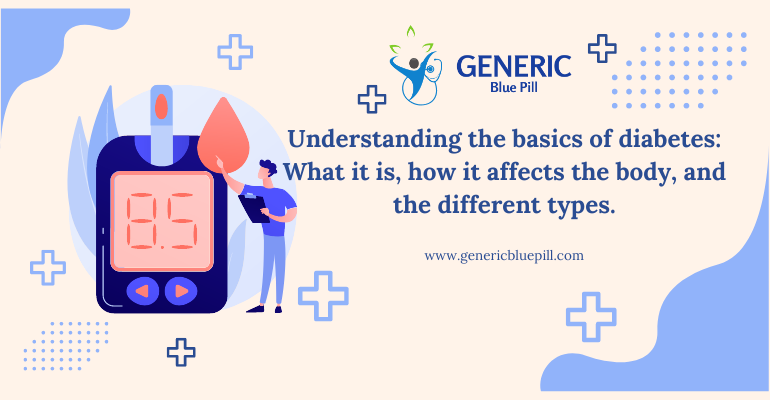Can Diabetic Neuropathy Be Reversed?
Diabetes-related neuropathy happens when you experience nerve damage due to persistently high blood sugar. Peripheral neuropathy is the most common type.

Diabetes is a chronic medical condition that affects millions of people worldwide. It occurs when the body is unable to properly regulate the level of glucose (sugar) in the blood. This can lead to a range of health problems and complications if left untreated.
To understand diabetes, it's important to first understand the role that glucose plays in the body. Glucose is a type of sugar that serves as the body's primary source of energy. It comes from the foods we eat, and is transported through the bloodstream to our cells, where it is used to power various bodily functions.
Normally, the body uses a hormone called insulin to regulate the amount of glucose in the blood. Insulin is produced by the pancreas, a gland located in the abdomen. When we eat, the pancreas releases insulin into the bloodstream, which helps to move glucose from the blood into the cells where it can be used for energy.
In people with diabetes, however, this process is disrupted. There are two main types of diabetes: type 1 and type 2.
Type 1 diabetes is an autoimmune condition that occurs when the body's immune system attacks and destroys the cells in the pancreas that produce insulin. This means that people with type 1 diabetes are unable to produce insulin on their own, and must rely on insulin injections or an insulin pump to regulate their blood sugar levels. Type 1 diabetes typically develops in childhood or adolescence, and is often diagnosed after a person experiences symptoms such as frequent urination, increased thirst, and unexplained weight loss.
Type 2 diabetes, on the other hand, occurs when the body becomes resistant to insulin, or when the pancreas is unable to produce enough insulin to meet the body's needs. This type of diabetes is often linked to lifestyle factors such as obesity, lack of exercise, and poor diet. It is more common in adults, but can also occur in children and adolescents.
There is also a third type of diabetes known as gestational diabetes, which occurs during pregnancy. This type of diabetes typically goes away after the baby is born, but women who have had gestational diabetes are at an increased risk of developing type 2 diabetes later in life.
Regardless of the type of diabetes, the condition can lead to a range of health problems if left untreated. Over time, high blood sugar levels can damage the blood vessels and nerves throughout the body, leading to complications such as heart disease, stroke, kidney disease, and nerve damage.
Fortunately, there are many things that people with diabetes can do to manage their condition and reduce their risk of complications. This may include making lifestyle changes such as adopting a healthy diet, exercising regularly, and maintaining a healthy weight. It may also involve monitoring blood sugar levels regularly, taking medications or insulin as prescribed, and working closely with healthcare professionals to manage the condition effectively.
In conclusion, diabetes is a chronic medical condition that affects the body's ability to regulate blood sugar levels. There are two main types of diabetes: type 1 and type 2, as well as gestational diabetes which occurs during pregnancy. While diabetes can lead to a range of complications if left untreated, there are many things that people with the condition can do to manage it effectively and reduce their risk of health problems. By understanding the basics of diabetes and working closely with healthcare professionals, people with diabetes can lead full and healthy lives.
Diabetes-related neuropathy happens when you experience nerve damage due to persistently high blood sugar. Peripheral neuropathy is the most common type.
Learn how to protect your cardiovascular system if you have diabetes. Explore the connection between diabetes and heart health, effective preventive measures, and lifestyle changes to keep your heart healthy.
Learn valuable tips for parents and caregivers on managing diabetes in children. Discover helpful strategies and advice for ensuring effective diabetes management and promoting the well-being of children with diabetes.
Discover the latest cutting-edge treatments and technologies for managing diabetes in 2024. Stay up-to-date on innovative developments that are revolutionizing diabetes care.
Learn about the emotional impact of living with diabetes, along with coping strategies and support systems to help manage the challenges of this chronic condition.